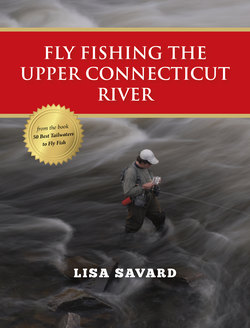Читать книгу Fly Fishing the Upper Connecticut River - Lisa Savard - Страница 3
ОглавлениеUpper Connecticut River (Northern New Hampshire)
Location: Northern New Hampshire is a 4½-hour drive from Boston or Portland, Maine, and 3½ hours from Manchester, NH, the closest airport.
The headwaters of the Connecticut River rise at the U.S./Canadian border at the northern tip of New Hampshire in the town of Pittsburg. The river flows through a chain of mountain lakes—the Connecticut Lakes—before beginning its journey to Long Island Sound. Tailwater dams keep river water cold all summer below First Connecticut Lake and Lake Francis.
The Upper Connecticut has three distinctly different stretches. From below Second Lake, the river is small, with 60 cfs the common flow. This section is home to
brook trout and wild landlocked salmon. Slightly stained with tannins, this freestone stretch features a cascading waterfall (“Falls in the River”) along with riffles, pools, and a wonderful pond area where Dry Brook enters. Small brook trout and small salmon are in the river year-round, but in the spring (early May), large landlocks come into the mouth of the river from First Lake to feed on spring-spawning baitfish. In the fall, lake salmon return to the river to spawn, providing another chance to catch salmon 15 to 20 inches. From the dam to the bridge on Magalloway Road, regulations are fly-fishing-only, catch-and-release. From the bridge to Green’s Point on First Lake, fly-fishing-only, two salmon per day, 15 inches minimum; for trout, 5 fish or 5 pounds; and for lake trout, 2 fish 18 inches or greater.
Below First Lake is the much-written-about Trophy Stretch. Here, flows are normally 150-300 cfs, with cold water flowing all summer. Dams on the Connecticut Lakes are managed
